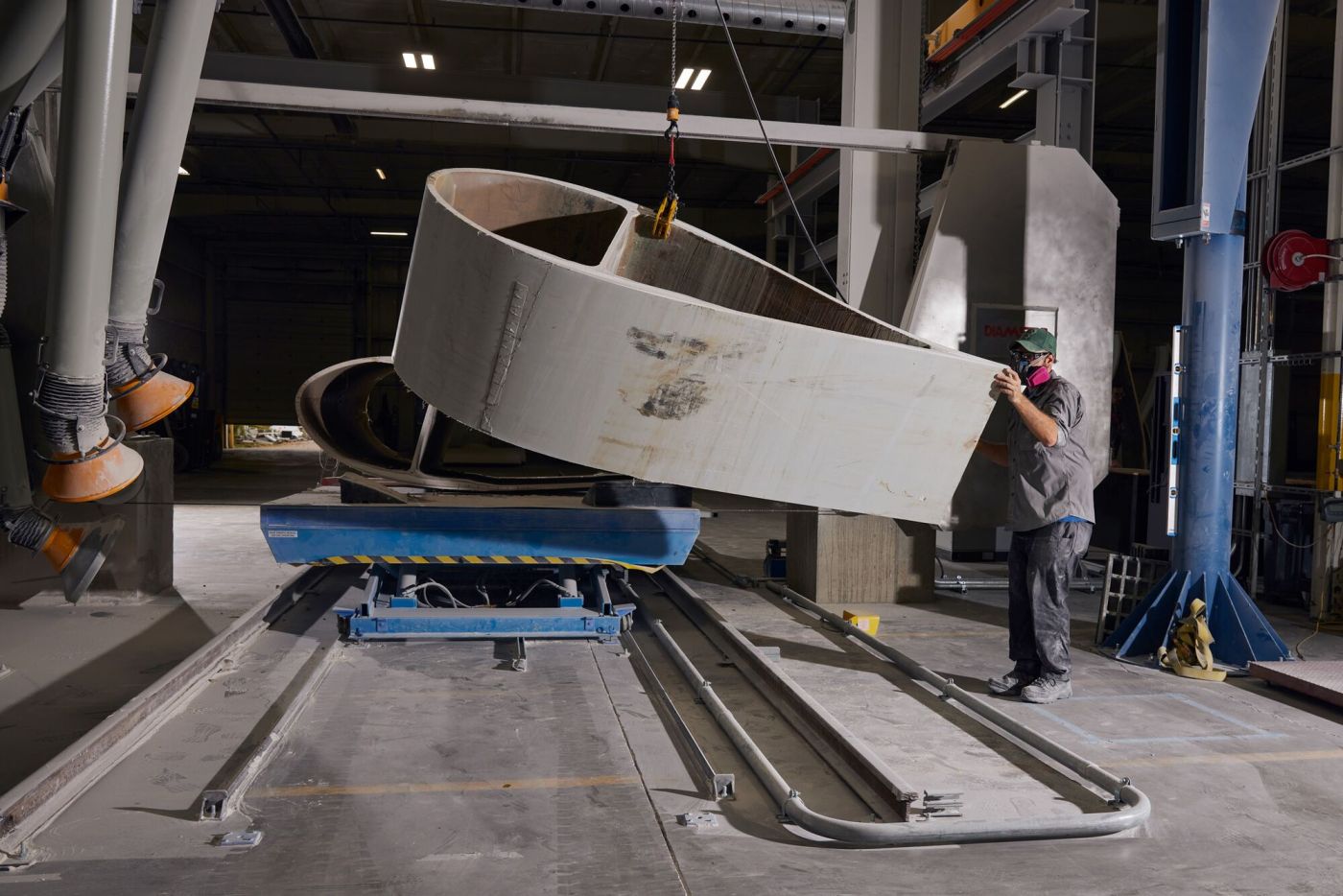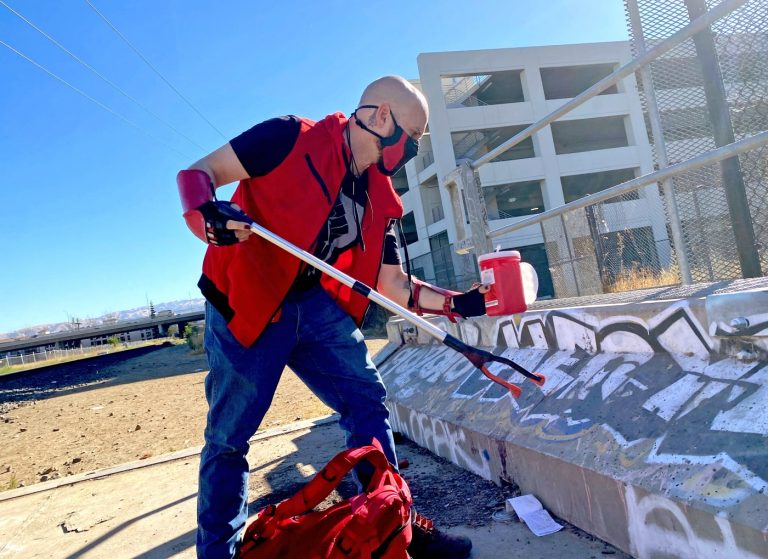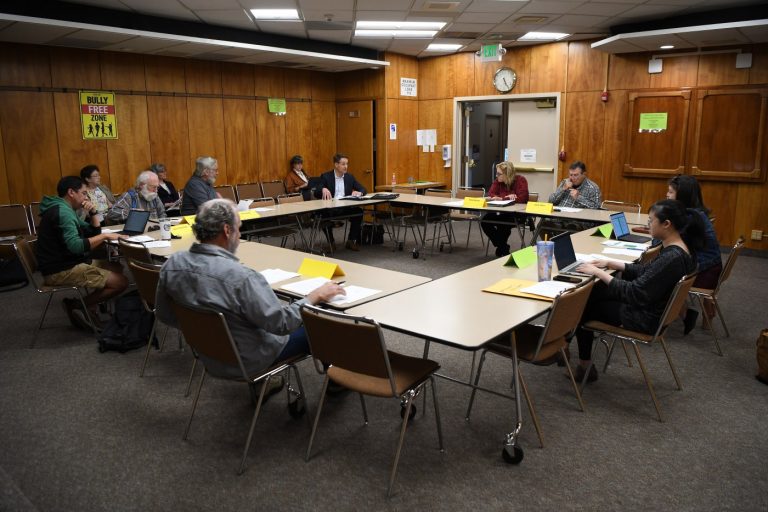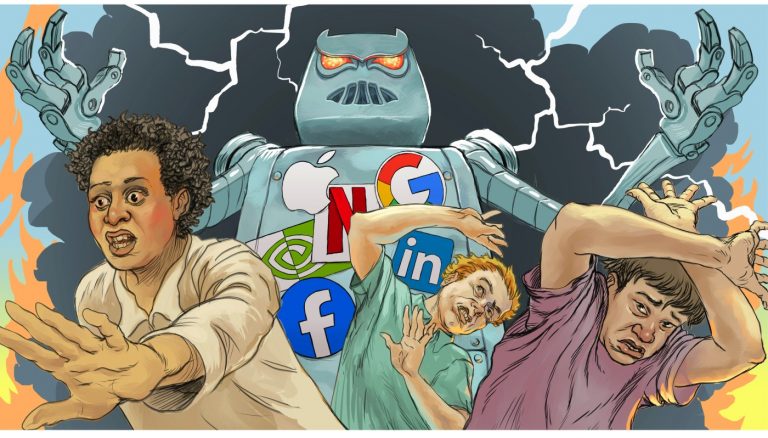As we transition to a green economy, we’re generating waste that, if we aren’t careful, isn’t so green. We looked at barriers and opportunities around three of the most challenging types of clean energy tech waste. This is one story in that four-part series.
Read the introduction here: What happens to old EV batteries, solar panels and wind turbines?
Read part one here: Recycling and ‘second life’ options keep retired EV batteries out of landfills
Read part two here: Here’s what happens to solar panels when they’re retired
Recyclable flooring panels. Material for large-scale 3D printing. A coating that can make concrete waterproof.
Twenty companies across the country just received $75,000 each from the Department of Energy to turn recycled wind turbine blades into those and other products.
Up to 90% of the mass of a wind turbine is made of materials such as steel and copper that can be recycled. But the same features that make turbine blades good at generating energy, even in harsh desert environments, also create a conundrum for what to do with them when they come down.
The blades can be as long as a football field. And they’re made of a tough but pliable mix of resin and fiberglass that’s so far proven virtually impossible to separate.
That’s why, last year, the federal government launched the Wind Turbine Materials Recycling Prize, offering companies a total of $5.1 million by this summer to kick-start a sustainable recycling industry for wind turbines.
The University of Georgia, for example, is working on a plan to use machines that stretch and twist the polymers found in turbine blades and transform them into long, thin threads that can be used to make other products.
Texas-based United Standard Materials Corporation also received a government grant for its project, which uses electrical pulses to turn old blades into silicon carbide that can help make new turbines even stronger. And that process generates clean hydrogen along the way, which can also be used for renewable energy.
Rather than break them down, Parker Kowalski, spokesman for Ohio-based Canvus, said his company is harnessing a blade’s tough structure.
When a blade becomes available, Canvus sends a contractor out to slice it into 50-foot sections and transport those sections to the company plant. There, Canvus can turn a 150-foot blade into up to 50 pieces of durable outdoor furniture. And any remaining material is sold to third-party companies that shred it for use in cement kilns or as aggregate to build roads.
To keep wind turbine blades from piling up in landfills, startups like Canvus are turning them into new products like benches. (Photo by Martin McConnell, The Morning Journall)
Related Articles
Here’s what happens to solar panels when they’re retired
Recycling and ‘second life’ options keep retired EV batteries out of landfills
What happens to old EV batteries, solar panels and wind turbines?
Deadly cold still grips much of the US but a thaw is coming
Federal rule forces oil states to cut planet-warming methane emissions
There are more than 300 such installations — some with custom paint jobs by local artists — welcoming visitors to communities across the country today. Kowalski said they recently had to shut down their program for communities to request new Canvus projects to give their team time to catch up.
Canvus’ business model relies on the fees companies pay them to decommission wind farms. Then they get corporate sponsors to pick up the tab for the furniture, which gets donated to communities for public use.
There may not be enough demand for benches and planters to account for the 2.2 million tons of wind turbine blade waste the National Renewable Energy Laboratory predicts will come by 2050. But in Europe, Kowalski noted the blades are being used to build bridges, sound barriers and all sorts of durable structures.
One use on Kowalski’s personal wishlist? Having an artist commission retired blades for an art installation at the Coachella music festival.
“We want to turn a problem into an opportunity that inspires people.”













+ There are no comments
Add yours